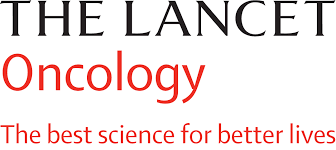
Hyperbaric Oxygen Therapy used to treat Radiation-induced cystitis
The Lancet – Oncology
Radiation-induced cystitis treated with hyperbaric oxygen therapy (RICH-ART): a randomised, controlled, phase 2–3 trial
Published:September 16, 2019
Summary
Background
Late radiation cystitis is an adverse effect of cancer treatment with radiotherapy in the pelvic region. Symptoms of late radiation cystitis can be assessed with the Expanded Prostate Index Composite Score (EPIC). Previous reports indicate that hyperbaric oxygen therapy reduces symptoms from late radiation cystitis, but the evidence is predominantly based on non-randomised and retrospective studies. We aimed to assess whether hyperbaric oxygen therapy would mitigate symptoms of late radiation cystitis.
Methods
We did a randomised, controlled, phase 2–3 trial (RICH-ART [Radiation Induced Cystitis treated with Hyperbaric oxygen—A Randomised controlled Trial]) at five Nordic university hospitals. All patients aged 18–80 years, with pelvic radiotherapy completed at least 6 months previously, a score of less than 80 in the urinary domain of the Expanded Prostate Index Composite Score (EPIC), and referred to participating hyperbaric clinics due to symptoms of late radiation cystitis, were eligible for inclusion. Exclusion criteria were ongoing bleeding requiring blood transfusion exceeding 500 mL in the past 4 weeks, permanent urinary catheter, bladder capacity less than 100 mL, fistula in the urinary bladder, previous treatment with hyperbaric oxygen therapy for late radiation injuries, and contraindications to hyperbaric oxygen therapy. After computer-generated 1:1 randomisation with block sizes of four for each stratification group (sex, time from radiotherapy to inclusion, and previous invasive surgery in the pelvic area), patients received hyperbaric oxygen therapy (30–40 sessions, 100% oxygen, breathed at a pressure of 240–250 kPa, for 80–90 min daily) or standard care with no restrictions for other medications or interventions. No masking was applied. The primary outcome was change in patient-perceived urinary symptoms assessed with EPIC from inclusion to follow-up at visit 4 (6–8 months later), measured as absolute change in EPIC urinary total score. RICH-ART closed enrolment on Dec 31, 2017; the last follow-up data will be compiled in 2023. RICH-ART is registered with ClinicalTrials.gov, number NCT01659723, and with the European Medicines Agency, number EudraCT 2012-001381-15.
Findings
Of 3 patients screened between May 9, 2012, and Dec 20, 2017, 87 patients were enrolled and randomly assigned to either hyperbaric oxygen therapy (n=42) or standard care (n=45). After excluding eight patients who withdrew consent directly after randomisation (one in the hyperbaric oxygen therapy group and seven in the standard care group), 79 were included in the intention-to-treat analyses (n=41 in the hyperbaric oxygen therapy group, n=38 in the standard care group). Median time from randomisation to visit 4 was 234 days (IQR 210–262) in the hyperbaric oxygen therapy group and 217 days (195–237) in the standard care group. The difference between change in group mean of EPIC urinary total score at visit 4 was 10·1 points (95% CI 2·2–18·1; p=0·013; 17·8 points [SD 18·4] in the hyperbaric oxygen therapy group vs 7·7 points [15·5] in the standard care group). 17 (41%) of 41 patients in the hyperbaric oxygen therapy group experienced transient grade 1–2 adverse events, related to sight and hearing, during the period of hyperbaric oxygen therapy.
Interpretation
Our results suggest that hyperbaric oxygen therapy relieves symptoms of late radiation cystitis. We conclude that hyperbaric oxygen therapy is a safe and well tolerated treatment.
Funding
The regional research fund of Region Västra Götaland, Sweden, the regional Health Technology Assessment Centre at Sahlgrenska University Hospital, Sweden, and Lions Cancer Research Fund of Western Sweden.
Full article here